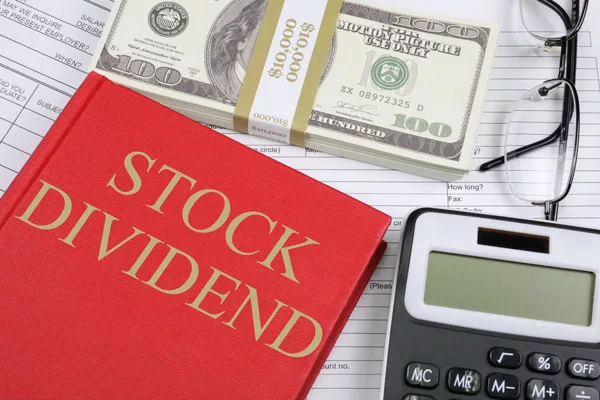Balancing Stocks and Bonds in Retirement: The Golden Rule for a Golden Age
Table of Contents
Introduction:
Ah, retirement! The golden years where you can finally kick back, relax, and… obsess over your financial portfolio? Well, not quite the tropical vacation you had in mind, but managing your finances in retirement is crucial. And a significant part of that is understanding how to balance stocks and bonds.
The Basics of Stocks and Bonds:
Stocks: The High-Reward Player
When you think of stocks, think of that adventurous friend who’s always up for a spontaneous road trip. Stocks, or equities, represent ownership in a company. They have the potential for high returns, but with that comes higher risk. The stock market can be a roller coaster, with prices rising and falling based on company performance, economic factors, and global events. But, as any thrill-seeker will tell you, with great risk comes great reward. Over the long term, stocks have historically outperformed other investments, making them an attractive option for those looking to grow their wealth.
Bonds: The Reliable Backbone
On the other hand, bonds are like that dependable friend who always remembers your birthday. When you buy a bond, you’re essentially lending money to an entity, like a corporation or government. In return, they promise to pay you interest at regular intervals and return the principal amount at the end of a specified period. Bonds are generally considered less risky than stocks. They provide regular income, making them a favorite for retirees looking for a steady cash flow. But, as with all things in life, there’s no such thing as a free lunch. The trade-off for this stability is typically lower returns compared to stocks.
Why Balance Matters:
The Risks of Going All-In on Stocks
Imagine putting all your retirement savings into stocks, only to face a market downturn. It’s like putting all your eggs in one basket and then accidentally dropping that basket. Not a pretty sight! An overly aggressive portfolio can lead to significant losses, especially if you need to withdraw money during a market slump.
The Safety-First Approach: Too Many Bonds?
Conversely, being overly conservative can also be a pitfall. If the majority of your portfolio is in bonds, you might miss out on the potential growth that stocks offer. It’s like always choosing the scenic route and never getting to your destination. Sure, it’s a pleasant journey, but you might not reach your financial goals in time.
Balancing Stocks and Bonds in Retirement Example:
Let’s take a hypothetical scenario. Meet Jane, a 65-year-old retiree. She has a retirement portfolio of $500,000. Following a balanced approach, she allocates 60% to stocks ($300,000) and 40% to bonds ($200,000). Over the years, the stock portion grows at an average rate of 7%, while the bonds grow at 3%. By diversifying her investments, Jane not only benefits from the growth potential of stocks but also cushions her portfolio against market volatility with bonds.
Crafting the Perfect Retirement Portfolio:
Retirement Portfolio by Age: How Your Strategy Should Evolve
As you age, your financial needs and risk tolerance change. In your younger years, you might lean more towards stocks, aiming for growth. But as you approach retirement, preserving capital becomes a priority. It’s a bit like switching from rock climbing to hill walking – both are enjoyable, but one is certainly less risky than the other!
Best Retirement Portfolio for a 65-Year-Old: Striking the Right Balance
For a 65-year-old, a common recommendation is the “age rule.” Subtract your age from 100 to determine the percentage of stocks in your portfolio. So, for a 65-year-old, that would be 35% stocks and 65% bonds. However, with people living longer and healthier lives, some financial experts suggest adjusting this rule to 110 or even 120, making the stock allocation higher.
Stock to Bond Ratio Chart:
Visual aids can be a boon when planning your finances. Imagine a pie chart, with slices representing different asset allocations. The size of each slice can help you visualize the perfect balance for your portfolio. For instance, a 50/50 split between stocks and bonds would mean half the pie is one color (representing stocks) and the other half another color (representing bonds). Adjusting these slices as you age can ensure you’re always on track.
Model Portfolio for a 65-Year-Old:
Consider a diversified portfolio that includes a mix of domestic and international stocks, government and corporate bonds, and perhaps a sprinkle of real estate or commodities. This blend can offer growth potential while also providing stability.
Conclusion:
Navigating the financial waters of retirement can seem daunting. But with a balanced approach to stocks and bonds, you can sail smoothly towards your financial goals. Remember, it’s not about avoiding all risks but managing them effectively. So, here’s to making the golden years truly golden!
Note: Throughout this journey, always remember to sprinkle in some humor, perhaps drawing from pop culture or common retirement “myths” to keep the content engaging and relatable. After all, who said finance had to be boring?
Frequently Asked Questions
What’s the main difference between stocks and bonds?
Stocks represent ownership in a company, giving you a claim on part of the company’s assets and earnings. Bonds, on the other hand, are like loans made to large organizations. When you purchase a bond, you’re lending money to the issuer in exchange for periodic interest payments and the return of the bond’s face value when it matures.
How often should I review my stock to bond ratio?
It’s a good practice to review your portfolio at least annually. Life changes, market conditions, and even shifts in your retirement goals can all signal a need to adjust your investments.
Are there any tools or apps to help balance my stocks and bonds?
Absolutely! Many online brokerage platforms offer built-in tools to help you assess and adjust your portfolio. Robo-advisors can also automatically balance your investments based on your risk tolerance and goals.
I’m 70 years old. Is it too late to invest in stocks?
It’s never too late! However, at 70, you might want to adopt a more conservative approach. While stocks offer growth potential, they also come with higher risks. It’s essential to balance potential returns with your comfort level and financial goals.
How do I determine my risk tolerance?
Risk tolerance is personal and can vary based on factors like age, financial situation, and investment goals. Many financial advisors offer questionnaires or tools to help determine your risk tolerance. Remember, it’s all about how comfortable you are with market fluctuations and potential losses.
What are the tax implications of selling stocks and bonds?
When you sell a stock or bond for a profit, you may owe capital gains tax. The rate can vary based on how long you’ve held the asset and your income level. It’s always a good idea to consult with a tax professional or financial advisor before making significant investment decisions.
Can I rely solely on bonds for a stable retirement income?
While bonds are generally more stable than stocks, relying solely on them might not provide enough growth to keep up with inflation. Diversifying your portfolio with a mix of stocks and bonds can offer both stability and growth potential.
What are the dangers of traveling the investment world solo?
Going it alone can be risky, especially if you’re not well-versed in the complexities of the financial markets. Without a clear strategy or understanding of investment principles, you might make impulsive decisions based on emotions or market hype. It’s always beneficial to seek guidance, whether from financial literature, online resources, or professional advisors.
How do I protect myself from potential investment scams?
Always do your research before making any investment. Check the credentials of any advisor or investment firm, and be wary of offers that sound too good to be true. Remember, if it sounds too good to be true, it probably is!
Are there any books or resources you’d recommend for someone looking to learn more about balancing stocks and bonds in retirement?
Certainly! “The Intelligent Investor” by Benjamin Graham is a classic that offers timeless wisdom. For those looking for more specific retirement advice, “How to Make Your Money Last” by Jane Bryant Quinn is an excellent read. Always keep learning and stay updated with the latest market trends and research.
Remember, the journey to financial security in retirement is a marathon, not a sprint. Equip yourself with knowledge, seek advice when needed, and always keep your goals in sight. Safe travels on your investment journey!




